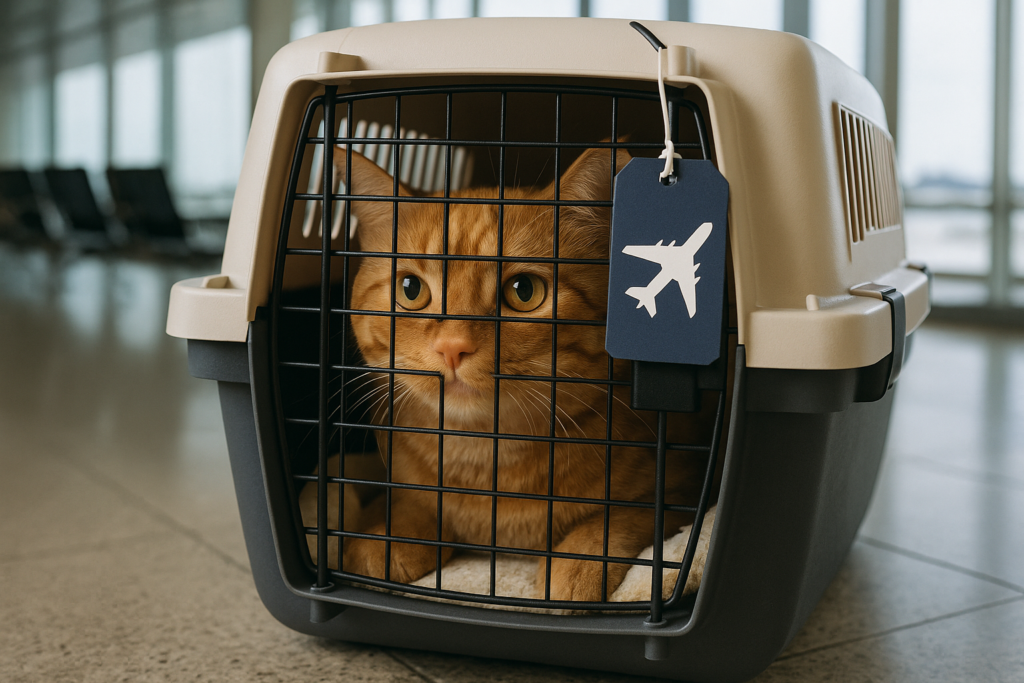Air travel with a pet requires careful planning, including airline regulations, crate training, in-flight comfort, and proper documentation. Understanding your pet’s needs and taking proactive steps can make a smooth journey, ensuring a stress-free experience for you and your pet.
Table of Contents
Preparing Your Pet for Air Travel
To ensure a successful trip with pets, starting to acclimate them weeks in advance is crucial. Allow your pet to sniff, sleep, and play in the travel carrier multiple times daily, making it a familiar and safe haven. This habit helps your pet perceive the carrier as a cozy den. For those unfamiliar with the intricacies of pet air travel, consulting resources, checklists, and professional guidance from platforms like AirPets International can simplify essential steps and help anticipate potential issues before they occur. Pet acclimation truly pays dividends. Staying calm and positive during these training sessions encourages similar behavior in your pet. Many seasoned travelers agree that investing time in preparation reduces your pet’s anxiety and your own. Creating positive travel routines is a win-win.
Choosing the Right Carrier
The ideal carrier for your pet is not just about meeting airline requirements; it should be robust, escape-proof, and ventilated on multiple sides. IATA-approved carriers are preferred for safe animal transport. Hard-sided crates provide security against turbulence. The carrier should be comfortable enough for your pet to stand, turn, and stretch out but not too large to cause injury. Consider the psychological aspect by adding a favorite blanket, clothing, or chew toy and building familiarity with the carrier through frequent short sessions before travel.
Understanding Airline Policies and Regulations
Airlines have unique pet travel policies, varying carrier sizes, breed restrictions, costs, and destinations. Some breeds, like brachycephalic dogs and cats, face specific restrictions due to respiratory risks. Airlines may limit pet numbers in cabins and cargo holds, and blackout dates are common in extreme weather. International travel may require visas, specialized import permits, microchipping, and quarantine periods. Regular consultation with government and industry updates can help navigate this changing landscape. Careful reading and double-checking your itinerary can help avoid complications.
Acquiring Required Health Documentation
Health certifications are crucial for pet well-being and travel. Airlines require these certificates no more than ten days before travel, confirming the pet’s health and vaccination status. Specific documentation requirements may vary depending on the destination, and researching pet import requirements is essential for overseas adventures. Efficient travelers book veterinary appointments as soon as travel details are finalized, as some destinations require microchip implantation and matching data on paperwork. Keeping digital and hard copies of all documentation reduces stress at security and customs, and double-checking everything in advance is recommended.
Reducing Travel Anxiety in Pets
Air travel is often a foreign and confining experience for animals—even outgoing dogs or cats can panic in the bustle and noise of the airport. As the ASPCA’s travel safety tips explain, the most effective calming tactics are simple: keeping routines, offering comfort objects, and creating a positive association with the carrier. Synthetic pheromones, thunder shirts, and natural supplements like chamomile can help reduce anxiety in dogs and cats. Consult your veterinarian before trying these strategies. Test them before leaving to find the best one for your pet. For most healthy pets, holistic approaches are the default. Wearing a worn t-shirt or soft blanket can also be helpful.
In-Flight Comfort and Safety Tips
To ensure a comfortable and safe in-flight experience for your pet, attach clear identification to the carrier, use a leak-proof water dispenser, freeze water before travel, withhold heavy meals 4-6 hours before flying, book direct flights whenever possible, and arrive early for a calmer, more controlled travel experience. Avoid connecting flights or layovers, as they can add layers of stress and unfamiliar environments. Book flights outside the hottest or coldest hours of the day to keep pets comfortable. Arriving early also provides last-minute relief walks and reduces the sensation of rushing.


